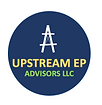US OSW : Developers Challenge: Managing Uncertainties in Front-End
- Tariq Siddiqui,
- Feb 14, 2021
- 3 min read
Updated: Nov 15, 2022
By: Tariq Siddiqui

The Challenge
Project developers face significant challenge in offshore wind (OSW) projects like their cousins in offshore oil & gas industry:
The uncertainties and risks are significant upfront in front-end, before the final investment decision is made, due to lack of data in early phases of the project.
High quality decisions have to be made under uncertainty
The success of project is measured by the value delivered during its operating life-cycle in comparison to value promised at the front-end (at FID).
Therefore managing front-end development is very critical, more so then the execution phase. So what we should do differently? There are some key learning and insights we can bring from offshore capital oil & gas projects.
Insights from Offshore Oil & Gas Capital Projects
The development managers identify, create and maximize value in the front-end space, before the final Investment Decision (FID) is made.
Project execution managers realize that value in the execution phase after FID.
Most projects fail to deliver value, not because of poor execution, but because of poor decision quality in front-end due to inadequate uncertainty management.
The benchmarking insights for example from offshore capital projects in oil & gas industry, clearly establishes that higher the front-end loading (i.e. acquisition of data in early phase to manage uncertainty/risk), the better will be the concurrence between predicted and actual revenue stream, cost, schedule and hence realized value of the project in the operation phase.
Investors are very wary of unpredictability of revenues, levels of returns and value erosion. This requires front-end developers to have rigorous process for making high quality decisions under uncertainty.
Companies manage uncertainties and risks using a decision-driven, stage gated process (slide is my adaption of front-end process for OSW from O&G).
Risk management is central to the value creation and preservation. The risks can be internal and external and must be managed through entire spectrum; technical, economic, commercial, organizational and political.
What Are the Uncertainties & Risks in US Offshore Wind (OSW)?
The US OSW projects, unlike their European counterparts, are especially prone to more severe meteorological conditions (ex: hurricanes). Given the emerging nature of industry, the uncertainties and risk concerns investors, developers and operators alike. Some of them are:
Technical risks (lack of data, wind speed, cost, schedule, technology, others)
Predictability and levels of return
Stability and predictability of regulatory environment and government support
Environmental impacts
Limited offshore wind market experience and capabilities
Shifting political priorities
How To Manage Uncertainties & Risks? - Through Robust Process
A stage gated, project maturation process facilitates, a dialogue driven process, between decision makers and development team. Resources needed in any given phase are decisions driven rather than activity driven. Process may consists of several
Identify phase
Assess phase - Feasibility or solution space
Select phase - Optimal development concept & BfD
Define Phase - WBS for costing & FID - FEED & Design Specification
Execute Phase (EPC)
Operate
An earlier project framing exercise before the start of the project helps project developers and decision makers answer three key questions;
Where we are?
Where we want to be?
And, how we will get there
Framing allows the integration and managing of interfaces, which are many in capital projects. It provides clarity on;
Objectives
Givens, focused decisions & tactical decisions
Key value drivers
Critical success factors
Risk management
Stakeholder management
Project road-map
4. The earlier phases of the project (before FID) are marked by large uncertainty due to lack of data. Therefore, in the feasibility/assessment stage, we have:
A range of scenarios (project design envelope or PDE) developed; based on uncertainties & outcomes for example, various site conditions (wind speed, wave height etc.) against various development options (foundation type, wind turbine size etc.).
As more data is collected through survey, design and deployment (SDM) strategy; uncertainty and risks are reduced in subsequent phases, giving a tighter estimate of cost, schedule, value and execution strategy to be adopted later in construction phase.
Bottom line; Robust Decision Making Process
The OSW industry in US is an emerging industry. It is on a learning curve, collaborating rightly with experienced international OSW developers. However, there is a need for the US developers to develop their own robust decision making process in front-end space, suited to their needs, to manage a pipeline of 34 projects currently in planning.
#Offshorewind #renewables #capitalprojects #projectmamanagement #powergeneration #riskmanagement #technology #oilandgas #developmentmanagement




Comments